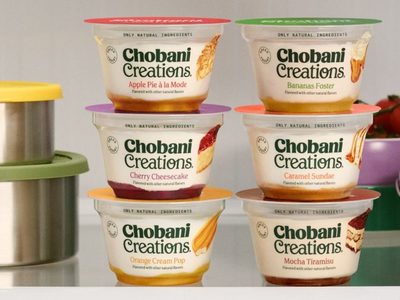KANSAS CITY — As the competition with restaurants for consumer dollars intensifies, operators of supermarkets and other retail food outlets could explore two potential growth opportunities, said Patty Johnson, global food analyst for Mintel.
One opportunity involves investing in fresh categories in the perimeter of the store. The other involves providing in-store experiences similar to those found at restaurants. Ms. Johnson added offering products void of artificial ingredients might improve how consumers perceive items in the middle of the store.
 |
| Patty Johnson, global food analyst for Mintel |
“Whole Foods, Fred Meyer and even Costco have amped up their fresh product offerings,” she said in a Nov. 14 webinar sponsored by Ingredion, Inc. and coordinated by Food Business News. “With economic improvement in the U.S., the pressure is on for retailers to compete with food service to maintain their share of stomach.”
The perimeter category in U.S. grocery stores, at $315 billion in 2014, could grow to $345.8 billion by 2019, with a best-case scenario of $370.9 billion and a worst-case scenario of $320.8 billion, according to Mintel. Ms. Johnson said Wal-Mart Stores, Inc., Bentonville, Ark., is focusing on this area as the company has hired 150 managers for fresh operations on the perimeter.
To improve the in-store experience, retailers may turn to a Mintel survey. It showed consumers are requesting more sampling, more local foods, a wider selection in specialty categories like gluten-free and ethnic, help with recipes and meal planning, signs to better navigate the store, cooking demonstrations and classes, and an in-store dietitian.
Restaurant-like offerings might help, too.
“Manufacturers and retailers are responding with options that emulate restaurant options in terms of freshness, quality, artisan-style and flavors,” Ms. Johnson said. “Retailers such as Whole Foods have taken the concept of fresh and natural to new levels, going beyond traditional in-store delis to broad, eat-in-store concepts.”
Target Corp., Minneapolis, is exploring new ways to merchandise easy-meal concepts in store, Ms. Johnson said. The company is offering such made-to-order fresh products as sushi, pizza, soup, chicken, burritos and sandwiches.
In the center of the store, retailers face negative consumer perception of processed foods. Millennial parents are most likely to avoid the center of store, Ms. Johnson said. When a Mintel survey asked people if they avoid buying processed food, 63% of millennial parents said they did, which was above the overall millennial category at 58%, baby boomers at 52% and Generation X at 48%.
Mintel sees artificial as public enemy No. 1, Ms. Johnson said. Consumers might show more interest in center-of-store products if they contain no artificial flavors, colors or preservatives.
JoAnn Rupp, marketing insights manager for Ingredion, said Ingredion consumer research has shown the fewer ingredients in a product, the better consumers believe it is for them. They also want products to be as close to homemade as possible. Consumers associate natural with the freshness on the perimeter of the store while they view products in the center of the store as less fresh, she said in the webinar.
Visual cues, front-of-pack messaging, images and colors all may help improve the perception of processed foods.
Ingredion recently coordinated research into 24 different chicken noodle soups, ranging from canned items in the center of the store to refrigerated items to soup sold in the deli section, said Layo Jegede, global sensory senior manager for Ingredion, in the webinar. The research found vibrant colors of vegetables and broth may improve the perception of soup. The irregular shape of chicken and vegetables also may have an impact. Consumers associated the color of a soup’s label with perceived freshness. A lighter color signified a cleaner label and a shorter ingredient list to them.






